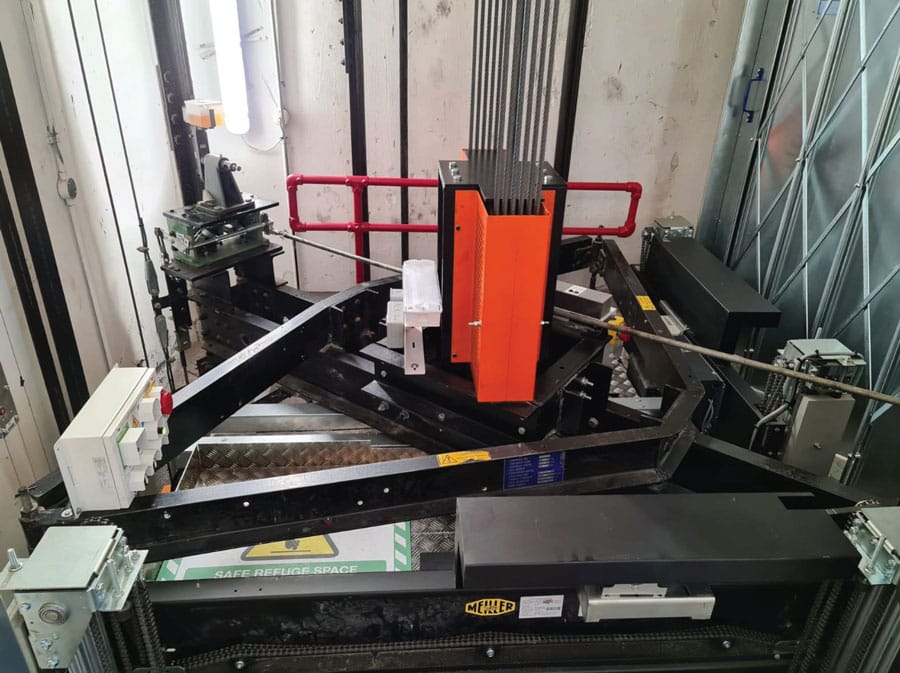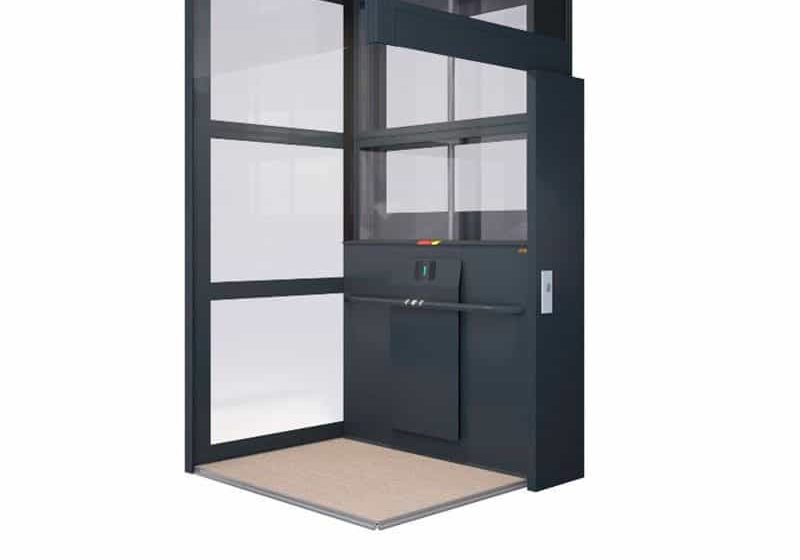Innovation for an Icon
Aug 1, 2021
Knowsley Lifts redesigns a problematic goods lift serving a historic landmark.
by Jay Maloney and Carey Oakes
Of the 12 elevators serving the 13-story Royal Liver Building on the Mersey River in Liverpool, U.K., the general goods lifts is the most critical, observes Carey Oakes, operations director at Liverpool-based Knowsley Lift Services. “Without the lift, no removal of waste from the floors is possible,” she says. “It is the workhorse of the whole development.” So, when that workhorse began experiencing repeated problems, property manager CBRE called on a team led by Knowsley to address them. The team conceived an innovative solution to reconfigure the lift, resulting in greater reliability and energy efficiency for its users, which include office tenants digital marketing agency Epic New Media, Everton FC soccer club, accounting organization Grant Thornton, HSBC investment bank, ITV TV network and Mott MacDonald engineering consultancy.
Opened in 1911, the building is the purpose-built home of Royal Liver Assurance Ltd., an incorporated friendly society — a benefit organization composed of a body of people who join together for a common financial or social purpose[1] — set up in 1850 to provide locals with assistance related to losing a wage-earning relative. One of the first buildings in the world built using reinforced concrete, Royal Liver stands 98.2 m to the top of its clock tower spires and 50.9 m to the main roof. Once one of the tallest buildings in the country, it is now only the joint-fifth tallest structure in the City of Liverpool.
Today, the Grand I-listed structure is one of the most recognizable landmarks in Liverpool and one of the city’s “Three Graces” lining the waterfront, along with the Port of Liverpool and Cunard buildings. Royal Liver is distinguished by its two fabled Liver Birds — custom copper sculptures sitting atop its spires — that watch over the city and the sea. Legend has it that were these two birds to fly away, then the city would cease to exist.
For more than 20 years, CBRE Senior Vertical-Transportation Engineer Peter Ferguson has been involved with the Royal Liver Building. He knows its lift portfolio very well. In 1995, the lifts were maintained by the OEM that had manufactured the equipment; all elevators were of the same manufacturer and installation. Eventually, investment was made on all the units, with upgrades commencing in 2004.
Once again, Ferguson became involved in the building through CBRE beginning in 2016. He was able to identify that, although some investments had been made to the goods lift, the unit was still problematic and unreliable. Previous works undertaken by others failed to improve its reliability and efficiency. Installation remained as it was originally designed — a 1:1 configuration with cross corner guides and an adjacent entrance to serve the loading bay area.
Using an innovative approach, the lift was designed to retain the cross-corner guides and car sling, but introduce car and counterweight diverter pulleys to achieve the 2-to-1 configuration.

Ferguson considered how the client could improve not only the reliability of the equipment, but also its efficiency. As the general installation primarily comprised OEM hardware with a different manufacturer’s closed-protocol, two-speed control system and a planetary gearbox hoisting machine, improvements could be made by converting the installation to 2:1 gearless AC VF drive with a high-quality open protocol control system.
After speaking to the building manager, Ian Edwards, and explaining the considerations and expected benefits, we agreed to further develop the conversion idea. Ferguson contacted suppliers with whom he was familiar and shared his thoughts on how to improve the lift. At this point, CBRE was instructed to proceed with a tender. Ferguson drew up the technical performance specifications accordingly.
Knowsley Lift Services was the selected contractor to undertake responsibility for the lift’s complete refurbishment, with Dave Tracy as project manager. The CBRE brief outlined by Ferguson was to assess the feasibility of the adaption to 2:1 roping and put forward the offer (possibly including the replacement or modification of counterweight guides to facilitate the adaptations). Major works were ongoing in a busy building, and our survey times were minimized and held to a strict schedule.
One of the biggest challenges was that the lift car served adjacent entrances at 90 degrees to each other with cross-corner type guides, resulting in the crown bar running 45 degrees in relation to the counterweight (as well as doors), and main structural steel components running perpendicular from counterweight to front entrance.
There are three 8-in.-x-12-in. structural I-beams supporting the installation. Two I-beams run between the counterweight guides, prompting the suggested option to move a guide, which would allow two pulleys to be used in a configuration best suited to avoid beams. However, this would have necessitated the whole shaft being scaffolded to allow operations to be carried out. It would have entailed cutting and modifying every counterweight bracket in the shaft, as they were heavy C-brackets that spanned guides and were fixed centrally.
To avoid steelwork and have new car pulleys running in line with the crown bar, Tommy Murphy, director and co-owner with Steve Fitzgerald of Knowsley Lift Services, and Ferguson looked at various alternative pulley arrangements. They conceived an option of fitting a bespoke-size pulley on the weight, which centralized ropes in available space between beams and guides and rotated the car pulley at an angle of 45 degrees to the crown bar, fixed above the center of gravity of the car. As always, a “plan B” was considered in the event that minor modification to steelwork was required to provide extra clearance once equipment had been fitted. Advice was sought from structural engineers to ensure the plan was acceptable and that extra bracing could be fitted to preserve structural integrity.
The solution also provided considerable efficiency improvements, which included replacing the original Schindler 42A, 18-kW planetary gear with an efficient, new 40A, 17.2-kW permanent-magnet-gearless solution. To guard against uncontrolled car movement, we used VG Safety ProductsTM gears at the top and bottom of the car. We also made sure linkages at the top of the car were engineered to avoid the new steel assembly partially obstructing the route. A solenoid-operated Bode 7 overspeed governor was used to interface with the control panel, which was provided by Kollmorgen.





Jay Maloney is a longtime lift engineer who progressed from apprentice to engineer, supervisor and test engineer. Maloney holds a National Vocational Qualification Level 4. He has been the service repair director at Knowsley Lifts for more than 10 years.
Get more of Elevator World. Sign up for our free e-newsletter.









